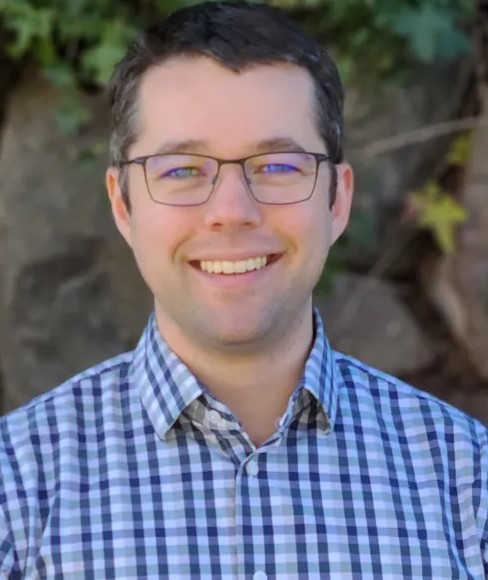Casper, Phillips & Associates Inc. (CPA) has named employees Richard Phillips and Andrew Hanek minority Associate Principals.
Phillips and Hanek remain mechanical engineers and civil engineers respectively at CPA but are now taking on leadership roles. CPA offers a wide variety of services, including procurement, specification, design, manufacturing review, modification, and accident investigation.
The three current principals—Jeff Hubbell, Tom Hubbell, and Mike Zhang—are leading the company after Rich W. Phillips, stepped down in 2020. Phillips and Hanek represent a new generation of ownership, and CPA is looking forward to a bright future.
Richard Phillips

Phillips, 35, has 11 years of company experience, performing peer reviews of contractors’ crane designs, including some of the largest container cranes in the world. He has experience in machine design and has designed mechanical systems for use on container cranes, overhead cranes, airplane paint stackers, and other systems. Phillips has performed finite element analysis of container cranes, rail-mounted gantry cranes, Goliath cranes, and whirly cranes.
After graduating from Oregon State with a Bachelor’s degree in Mechanical Engineering (BSME), he went on to get a Master of Science in Mechanical Engineering (MSME) from the University of Southern California. Since being hired out of college, Phillips has been part of many successful projects and proven to be a valued team member. He has worked in all of CPA’s major branches and has been adaptable to the different industries the company serves.
Phillips said: “I had a general idea of my career path even before attending college as my father [Rich W. Phillips] was the founder of the company. Stepping up to ownership increases the responsibility but also helps to spread out the workload shared by the principals. From a client’s perspective, they benefit from a long-term vision, enabling all parties to grow together.”
Andrew Hanek

Hanek, 32, has eight years of design experience with CPA, focusing on container cranes and overhead crane systems, in addition to performing peer reviews of crane designs, design of repairs and retrofits, custom software programming for finite element analysis pre-and post-processing, and 3D point cloud scanning and processing. Other notable work includes developing a container crane anti-seismic system, assisting clients in planning, and purchasing cranes, and 3D solids modeling of the wharf to soil interface for offloading.
Hanek grew up in the Pacific Northwest. From high school, he knew he wanted to be a structural engineer and went to college to study structural engineering. There, he harbored ambitions of starting his own company, before graduating with a Bachelor of Science in Civil Engineering at the University of Washington and Master of Science in Civil Engineering at Oregon State University. Supported by a successful career to date, Hanek also fulfills his ambition to step into company ownership.
He said: “After working with CPA over several years and getting great enjoyment from the projects we do, it’s exciting to continue to build on what we have achieved to date and cement a legacy in the business through incremental ownership. I hope to leverage my strong background in modern technologies, including programming for design. I enjoy responsibility as the in-house, go-to for our programming and 3D-related scanning questions, for example.”
Ongoing collaboration
The team is well prepared to meet the immediate, mid-, and long-term challenges of customers. Jeff and Tom Hubbell are licensed structural engineers; Hanek is a civil engineer and has a goal to become a licensed structural engineer; while Zhang and Phillips are licensed, mechanical engineers. Hanek has already started onboarding some of Rich W. Phillips’ clients and is helping to fill in the void that he is leaving as he transitions into retirement.
Many projects will involve collaboration with multiple team members. As Phillips said, “Cranes are not just structural steel; they are a complex system of electrical, mechanical, and structural components. No individual can have expertise in all these areas of practice.”
Proprietary software development
One of Hanek’s immediate objectives is to maintain and develop the proprietary structural software suite, previously overseen by Rich W. Phillips., while Phillips Jr. creates a proprietary mechanical software suite.
Without proper planning, the increasing size of vessels can make equipment and facilities obsolete long before the capital investment is amortized. Before the cranes are purchased, CPA can quickly analyze different crane geometry, such as the effect of rail gauges, and help ports procure cranes that best suit their specific needs. Pre-purchase engineering can ensure the cranes do not overload the dock, and the specified crane is buildable.
Phillips said: “Crane manufacturers like to re-use old designs because it saves money on engineering. However, it is impractical to design a standard crane that meets the requirements of all ports worldwide. Geological conditions where the cranes will be used dictate many different design considerations. A container crane is designed for use in Florida will be designed for hurricane winds, while a crane destined for Los Angeles will be designed for earthquakes. Some locations will require that the cranes pass under a bridge during delivery.”
Hanek concurred: “The challenge of standardizing a crane design starts to become more apparent when these conditions are considered. Designing a standard crane for a standard earthquake to be shipped under a standard bridge and placed on a standard dock is impractical. Therefore, CPA developed proprietary software—to analyze cranes for all the different conditions and requirements.”










